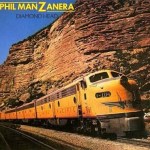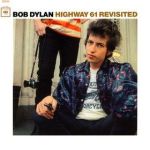 More of the Music of Roxy Music
More of the Music of Roxy Music
More of Our Best Art Rock Records
The wind is at your back here because this is one seriously well-recorded album. If this copy doesn’t wake up your stereo nothing will.
Like its brother, 801 Live, this album is an amazing sonic blockbuster, with sound that positively leaps out of the speakers. Why shouldn’t it? It was engineered by the superbly talented Rhett Davies at Island, the genius behind Taking Tiger Mountain, the aforementioned 801 Live, Avalon, Dire Straits’ first album and many many more.
If we could regularly find copies of this audiophile blockbuster (and frankly if more people appreciated the album) it would definitely go on our Top 100 Rock and Pop List. In fact, it would easily make the Top Twenty from that list, it’s that good.
Looking for Tubey Magic? Rhett Davies is your man. Just think about the sound of the first Dire Straits album or Avalon. The best pressings of those albums — those with truly Hot Stampers — are swimming in it.
Big Speakers Wanted
This isn’t known as an audiophile album but it should be — the sound is GLORIOUS — wall to wall, floor to ceiling, and as rich and dynamic as it gets. It’s also a big speaker album. Play this one as loud as you can. (801 Live is exactly the same way and needs high volumes to come to life.)
A Personal Favorite
This album basically became the set list for 801 Live, the concert collaboration between Eno, Manzanera and their fellow travelers. That album is one of my all time favorites too, and a Must Own for anyone who likes British Art Rock from the ’70s.
What both of these albums share is amazing guitar work. Manzanera was the guitarist for Roxy Music, and this album can be enjoyed simply as an exercise in hearing every possible kind of sound the guitar can make. It also helps to have Eno doing electronic treatments for the instrument and coming up with a whole new sound.
One listen to a song like Diamond Head is all it should take to make you a fan. If that song doesn’t do it for you, the rest of the album won’t either, but I can’t imagine how that could be.
Looking at the Hot Stamper checklist below, it occurs to me that the best copies of this album excel in every area we mention. It’s energetic, dynamic, the sound just jumps out of the speakers, there’s tons of bass, it’s smooth — in short, it’s doing it all.
What to Look For
Domestic pressings suck. German pressings too. Don’t waste your money. We’ve never heard a good one. (And most of the British pressings you can find won’t hold a candle to this one.)
Please note that many of our Hot Stamper pressings are only available as imports. It has been our experience that the domestic pressings of these albums are simply not competitive with the better imports.
To see more reviews and commentaries for titles that we think sound their best on imported vinyl, please click here.
Want to avoid having to pay our admittedly high prices and find a top quality copy for yourself?
Consider taking our moderately helpful advice concerning the pressings that most often win our shootouts.
In the case of Diamond Head, we like it best this way:
- On the right early pressing
- On the right UK Island pressing
Stereo Love
It’s clear to us that our stereo system just loves this record. Let’s talk about why we think that might be.
(more…)
 More of the music of Jean Sibelius (1865-1957)
More of the music of Jean Sibelius (1865-1957)

 More of the Music of the Cowboy Junkies
More of the Music of the Cowboy Junkies





 More Columbia Classical Recordings
More Columbia Classical Recordings